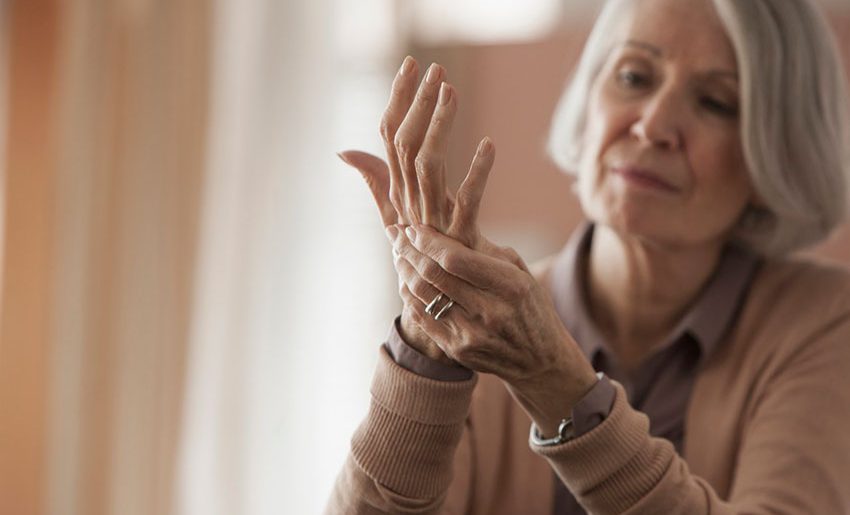Understanding Chronic Pain

Chronic pain lasts for months or even years. Understanding chronic pain can help you find ways to cope and hopefully improve your condition and quality of life.
Everyone experiences pain at some point, whether momentary and minor or extreme and acute. Pain from even broken bones or a surgical procedure usually lessens and eventually goes completely, or mostly, away.
But chronic pain is different. The National Center for Complementary and Integrative Health (NCCIH) notes that a diagnosis of chronic pain occurs when a person has pain that continues for more than a month or two.
Sometimes the reason a person has ongoing pain, such as advanced cancer or arthritis, is clear. An event or illness, like a broken bone, sprained back, or infection, may clearly mark when chronic pain started. But it doesn’t always explain why pain continues long-term after the successful treatment of a disease or injury.
In other cases, what triggered the pain in the first place can be hard or impossible to identify, even if the discomfort is severe. What’s more, chronic pain can sometimes develop and persist even without any obvious cause. That’s one reason understanding chronic pain can be difficult for doctors, as well as for their patients.
YOU MIGHT ALSO LIKE: Exercise Could Make You More Tolerant of Pain
Understanding chronic pain and health problems
Although pain can feel miserable and even excruciating, it is a normal sensation triggered in your nervous system to alert you to an injury that needs your attention, the National Institute of Neurological Disorders and Stroke (NINDS) explains. When the pain signals continue to fire in your nervous system for weeks, months, or even years, the result can be persistent, chronic pain.
For example, the Arthritis Foundation points out chronic pain sometimes happens with both rheumatoid arthritis (RA), an autoimmune disease that causes painful, swollen joints, and osteoarthritis (caused by wear and tear on joints over time).
Disease-modifying drugs (or DMARDs) can often control RA, eliminating joint pain in many patients. Replacing joints damaged by osteoarthritis can also reduce or eliminate pain. But not everyone finds relief, and some patients with either type of arthritis report unrelenting chronic pain, even with the best treatments available.
The explanation for chronic pain from research, according to the Arthritis Foundation, appears linked to changes in your brain. Long-standing pain, over time, can trigger changes in neurons (brain cells that carry pain messages to your body), causing them to misinterpret small bodily signs of pain as intense pain. This type of chronic pain is known as centralized pain, meaning a misfiring nervous system is the cause rather than an injury or inflammation.
There are many other chronic pain conditions, and older adults are often affected, the NINDS notes. Painful conditions, such as osteoarthritis, increase with age. Women are also more likely to experience chronic pain than men.
Chronic pain is reported across all age groups and genders, however. Other types of common chronic pain include:
- Low back pain
- Headaches
- Cancer pain
- Nerve pain
- Psychogenic pain (pain not caused by an injury or disease and lacking any visible sign of damage inside or outside of the nervous system)
It’s not unusual for a person to suffer from two or more conditions linked to chronic pain, such as:
- Chronic fatigue syndrome
- Endometriosis
- Fibromyalgia
- Temporomandibular joint dysfunction (orTMJ)
- Inflammatory bowel disease
Researchers don’t yet know whether those conditions have a common cause, but environmental and psychological factors may play a role, the NINDS points out.
Hope for chronic pain sufferers
When it comes to understanding chronic pain, it’s important to recognize the condition not only causes discomfort but also interferes with quality of life. It can disrupt sleep, causing fatigue and sometimes leading to depression and anxiety. Chronic pain sufferers often are unable to participate in activities they once enjoyed, and their ability to work can be disrupted, too.
If you suffer from chronic pain, know that you are not alone. An estimated 50 million U.S. adults experience chronic pain, according to the Centers for Disease Control and Prevention.
Talk to you doctor and ask for referral to a pain specialist if you have ongoing pain. Many people with chronic pain can be helped without heavy reliance on pain medication, including potentially addictive drugs.
While medication and surgery are sometimes needed, complimentary therapies — including acupuncture, massage therapy, meditation, relaxation techniques, yoga, tai chi, and qi gong — are being studied for pain relief and may help some people with chronic pain, the NCICH notes.
The American College of Physicians encourages the use of non-drug complementary approaches, including acupuncture, biofeedback, spinal manipulation, yoga, tai chi, and mindfulness-based stress reduction, as initial treatment for chronic low-back pain. The organization also advises exercise and cognitive behavioral therapy as treatment for many patients with chronic back pain.
The American College of Rheumatology recommends some complementary approaches, too, especially tai chi, for chronic pain related to osteoarthritis of the hip or knee.
Always talk to your doctor before pursuing any alternative treatments for chronic pain, to make sure they are right for you.
Updated:
June 16, 2023
Reviewed By:
Janet O’Dell